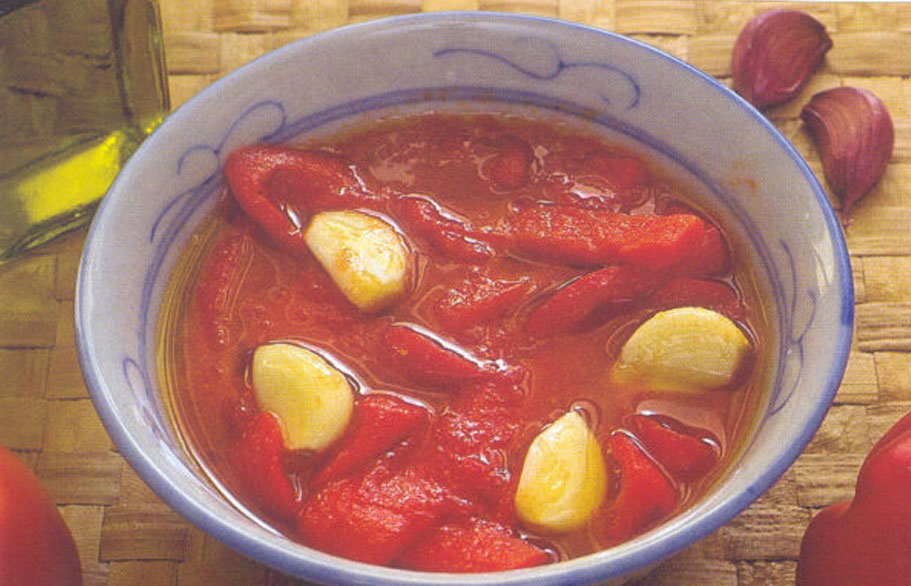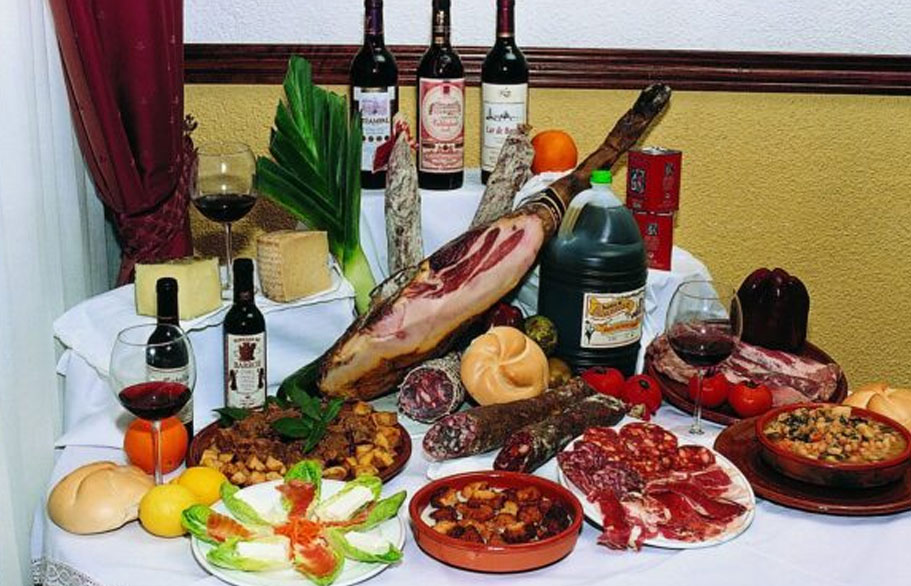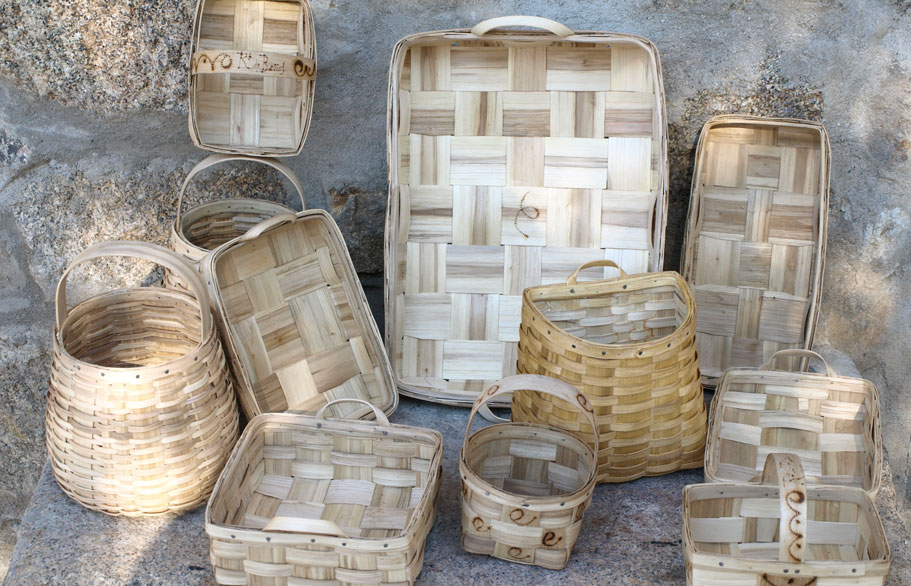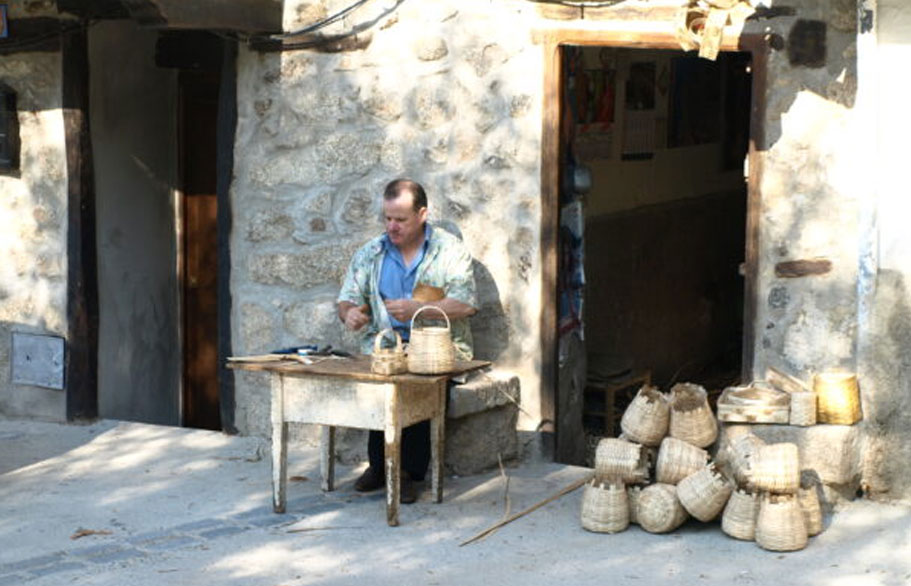Baños de Montemayor is in the north of Extremadura on the boundary of the Province of Cáceres with Salamanca, in the geographic area known as the Ambroz Valley (in the foothills to the south of Sierra de Gredos). It is crossed by the old Vía de la Plata N-630 road, which goes through the town centre, which means that it can easily reached from any point in the Iberian Peninsula.
The nearest towns are Béjar (15km) to the north, and Hervás (7km) and Plasencia (40km) to the south, while the Trasierra-Tierras de Granadilla region, the Gabriel and Galán reservoir (20km) and Las Hurdes (35km) are located to the west and the Jerte Valley (38km) to the east.
The geography of Baños de Montemayor is very rugged. It is surrounded by mountains between 850 and 1,200m high, among large forests of chestnut trees and other native species. Its privileged location in the bottom of Ambroz Valley means that Baños de Montemayor has a mild climate in both summer and winter and travellers can enjoy their stay there at any time of the year.
One of its main characteristics is the abundance of water, as numerous springs and risings are found in the town centre as well as in the surroundings.
The municipality covers an area of about 22 square kilometres and has a population of 820 inhabitants.
Para descargar el plano de Baños de Montemayor, pinche aquí.
¿Cómo llegar?
By road: A-66 motorway from the north and the south.
Public transport:
- Buses
- ALSA (www.alsa.es) connects Baños de Montemayor with Salamanca, Plasencia, Cáceres, Mérida, Zafra, Seville, Valladolid, Oviedo, Gijón, Basque Country, etc. Telephone: 902 422 242
- MONBUS (www.monbus.es) connects the town with Piedrahita, Ávila and Madrid. Telephone: 982 292900
- All the buses stop in the Plaza del Arenal.
- Trains
- The nearest railway stations are in Plasencia (42km away to the south) and Salamanca (90km to the north).
- For information about times, fares and purchase of tickets: www.renfe.es, or on the telephone 902 240202 for tickets
- Airport
- The nearest airport is Matacan (Salamanca, 90km). Madrid-Barajas international airport is 230km away, and there is a daily direct bus service Madrid-Baños de Montemayor-Madrid.
Más información
The oldest remains found in Baños de Montemayor belong to the Roman period and are connected with a hot spring and the Roman road. Researchers who have studied the Roman Vía de la Plata have not reached an agreement about the name of the town at that time, as some of them have associated it with the mansion of Caecilio Vico or Caelionico and others with Banium or Aquae Caperensis.
The Roman road follows its original line in two long sections in the northern and southern accesses to the town. The cobbled pavements in the northern section, nearly 2km long, was restored in 1973.Two examples of culverts can be seen in this section at the start of the climb to the pass. In the southern section, half a kilometre from the town, a small Roman bridge, called Cubo Bridge, has a single 3.5m arch, but it has been largely reformed.
During the Middle Ages, the Vía de la Plata lost its economic importance and after the Re-conquest, it was used to mark the frontier between the Christian kingdoms of Castile and León. It was later used to delimit the ecclesiastic jurisdictions of the dioceses of Coria and Plasencia. In this way, Baños de Montemayor became a frontier town and two centres grew (Baños de Montemayor and Baños de Béjar), practically united in their physical reality but completely different administratively. Each town belonged to a different kingdom, different diocese (the reason for the two parish churches) and a different feudal lord. The part belonging to the parish of St Catherine (eastern side of the Roman road) was in the kingdom of Castile and the diocese of Plasencia, and was the property of the Duchy of Béjar. The parish of St Mary (western side of the Roman road) was in the kingdom of León, the diocese of Coria and the Lordship of the Marquis of Montemayor. Following the provincial division in 1833, Baños de Montemayor became a single municipality and in 1959 it was included in the diocese of Plasencia.
In the Middle Ages, it became a road for pilgrims as it formed part of the southern St James Way. It was also a road for transhumance as part of the Cañada Vizana.
According to some historians, in the 15th century, during the struggle between Joanna la Beltraneja and Isabella of Castile for the throne, Afonso V of Portugal, who was married to La Beltraneja, came to Baños de Montemayor on his way from Plasencia de Toro and Arevalo to fight the battle that Isabella’s husband Ferdinand had started.
Since its origins, the history of the town has been marked by the constant movement of travellers, pilgrims and goods because the Vía de la Plata goes though it and because of the two hot springs that have been used since Roman times and which are now used for a spa that is a point of reference at an international level. They make Baños de Montemayor a very special town.
The gastronomy of Baños de Montemayor reflects simplicity based on the quality of its basic products. Its favourable climate, with mild winters and not excessively warm summers means that we can taste delicious dishes made with garden vegetables, such as zorongollo (salad with roast peppers, onion and garlic), marinated potatoes (a dish with potatoes that is eaten cold) and Perico tomatoes.

The pastures in the area give the meat from sheep, goats and cattle a special taste and texture. They can be tasted in the form of caldereta (of lamb or kid), or roast or as a frite.

Cured meat and Iberian ham deserve a special mention since they are the essence of our gastronomy. These products of Iberian pigs, the result of the geographic location of the town and the artisan process of production and curing, handed down and improved over generations, will delight the most demanding gourmet.
Nor should we forget the cheese made from goats’ milk that can be found in different degrees of maturity.
To accompany these dishes, there is nothing better than pitarra wine made in the traditional way, very often in a domestic situation.
To complete our summary of the gastronomy, we must mention the typical desserts, such as the covered fried roscas, perrunillas and buns, that will make the perfect complement to a meal based on the products of our town.
Local crafts are found in Baños de Montemayor in the form of basketry made from chestnut wood. Their manufacture starts by managing the trees.
Chestnut trees or sticks for these types of crafts must be worked when they are young, between a minimum and five years and a maximum of seven, while the fibres are thin and sweet in their behaviour.


In this way, the basket-makers can bend them as they like.
The first step is the selection, cutting and gathering of the sticks, from which the strips used to make the baskets are obtained. In the next phase, the wood is prepared in the processes called warming and carving.
It continues in the processes called founding the basket, making the rings, raising the basket and weaving the basket. The work is usually finished by engraving the basket by fire, which is a step that is exclusive to Baños craftsmanship and differentiates it.
It should finally be stressed that both obtaining and treating the raw materials and fabricating the baskets are made in a completely traditional way using techniques that have been applied for centuries. This gives each object a distinctive and original touch, as well as making them last almost for ever.
